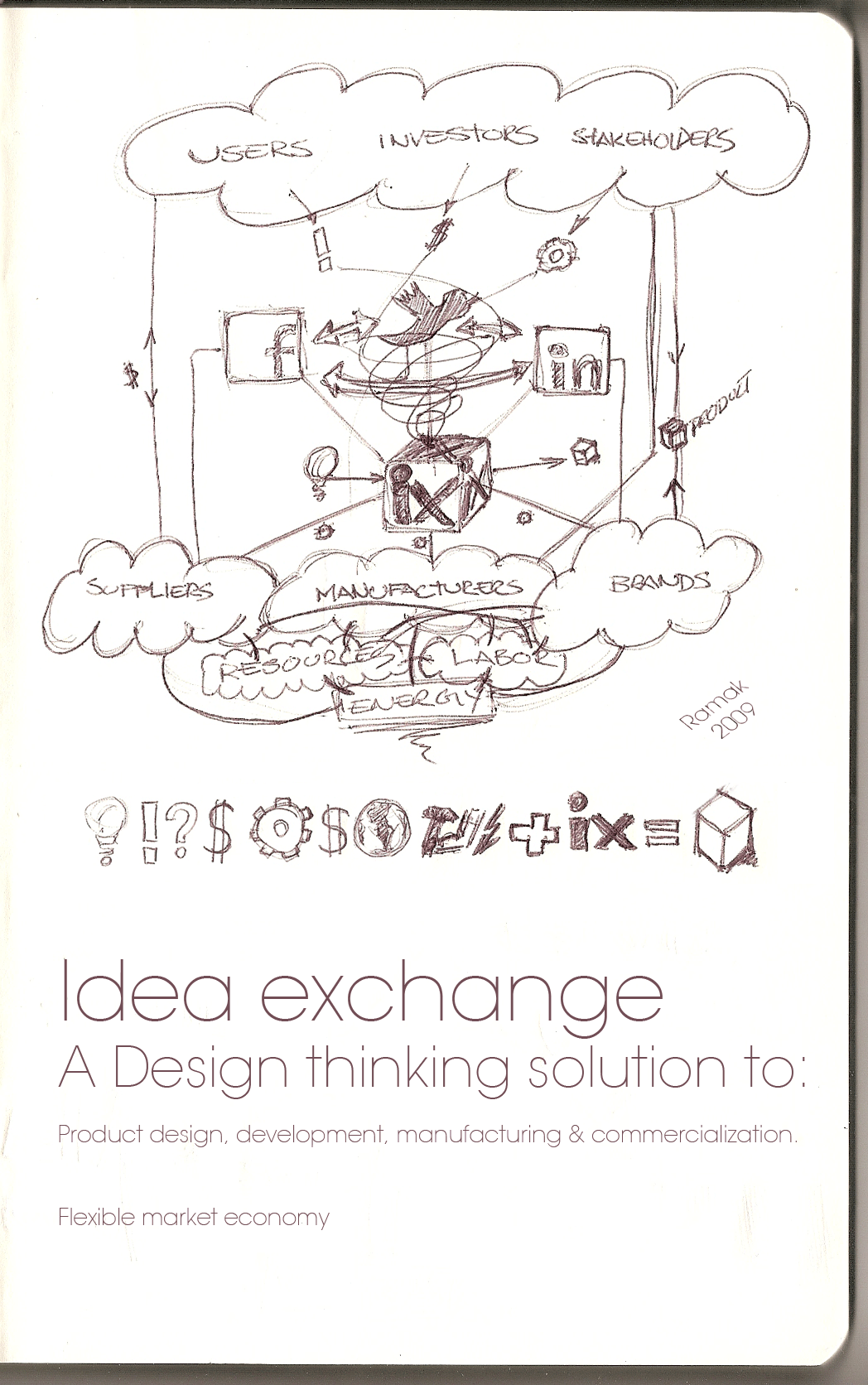Idea exchange : design thinking
By sharing a concept, one risks loosing the idea to others and thereby loosing any potential revenues or acknowledgments from the concept, but only by sharing one can create new opportunities. This business model proposes a secure network, that provides an environment for all people who are interested, to be a part of global product and resource selection.
The first aspect of this proposal is that products will only be produced if there is enough demand-committed on the project. This is demonstrated by the presale, barter participation in a project or investments made towards the concept or product by the stakeholders & shareholders. This represents opportunities for financiers, developers, manufacturers, buyers, as well as the labor markets of all levels to connect, produce, distribute, buy and sell products on a trusted network.
Here is how the concept works:
A new design thinking concept is created by an (Intellectual Property Owner, anyone), this is posted on the system or a controlled group, network, category or as private as a reply to a request for a product.
The concept is nominated for review when it has created enough investment for a review; the review is preformed by a PRB (Product Review Board), which consists of the social group for the particular product’s stakeholders, buyers from all level of purchasing spectrum; investors, financiers, institutions, distributors, retailers, environmentalists and consumers. This review board functions much like stock exchange and/or online purchase, where buyers can pre-purchase the resultant product and/or stocks and gain voting influence in a product or concept opposed to a company, early investors can potentially profit at much higher levels than the later adaptors who are coming on board after the product has been proven and risks have been mitigated.
Likewise a request for a product can be created by anyone in any buying capacity, creating requests such as:
- A sponsored development bid for a “widget”,
- A we need a better “widget” our budget is X$,
- Or the famous, wouldn’t be nice to have a “widget”
Subsequent to achieving it’s preliminary design financing, the IP Owner and a PRB assigned PM (Product Manager) analyze, estimate and report the costs of each development phases, return on investment as well as environmental and overall value of the submission. Depending on level of investment generated by the concept, a plan is generated to support the first stage or all the stages of development and commercialization. At this stage the IP owner and PM can breakup the work and post the work-packages for bidding on the system, group, network or category. Please note that this model work with large corporate organizations as well as startups and independents, where they would operate in private or semi private or public groups depending on their strategy.
As a product advances thought the development phases, the development results are made available to the shareholders and buyers. Likewise feedback from shareholders and buyers are made available to the IP Owner allowing for midcourse adjustments. This creates a flexible market economy that drives the decision for production or cancellation of a product and the eventual financing, development and the sales process.
Skilled labor markets as well as the manufacturing sectors can create their own individual storefronts with their credentials, experience, successful exchanges, ratings, portfolio and recommendations. Labor skills could be bartered in the system, one can bid for a work-package, and for exchange of their services they could receive any combination of service, product, equity and/or cash from the product’s revenue stream.
Since there is transparency in the system intellectual property infringement from manufacturer, Buyers and IP owners can be identified if a final products is distributed thorough the system, a dispute management protocol can blacklist or reduce their rating depending on the severity of event.
Other benefits:
- Ability to create product criteria’s such as: efficiency, ecological, labeling, fair wage, ethical, carbon tax, % renewable energy consumed, and other criteria.
- Create an excellent link to physical products and markets
This is a very brief overview of this design thinking concept; I hope you find it interesting.
Sincerely,
Ramak Radmard Creative Director & Chief Designer of Lucidream Montreal, Quebec, Canada Design Thinking/Industrial design/product development www.lucidream.com
